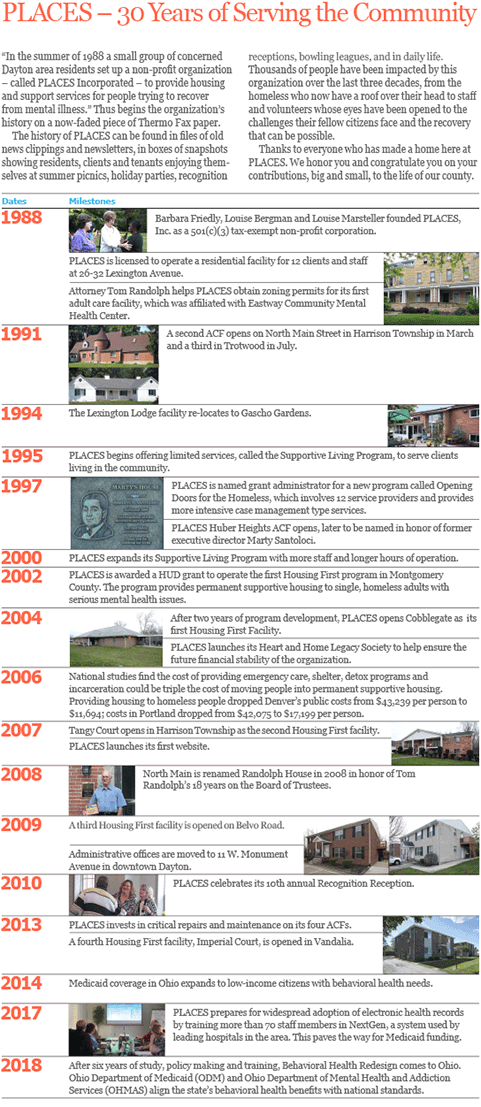

30th Anniversary Public Celebration at Dayton Dragons
Join us as the Dragons play the Kane County Cougars for a fun evening to celebrate 30 years of hitting home runs for mentally ill adults and covering the bases when people need housing. Monday, July 16, 2018, 7pm, Fifth Third Field.Contact Kathy Nickell at 937-461-4300 for tickets .
Congratulations! PLACES Earns Certification to Bill Medicaid
PLACES received notice from the Ohio Department of Mental Health and Addiction Services in May that it has been certified to bill Medicaid for select behavioral health services.
New Director of Clinical Services Hired
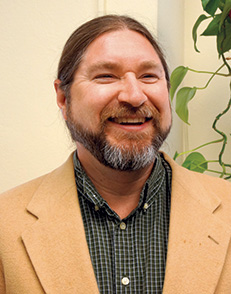
Brian Wlodarczyk, LISW-S, joined PLACES in March as Director of Clinical Services, responsible for clinical oversight of service delivery. His duties include reviewing clinical services at the group homes and overseeing case managers at Housing First properties and the Opening Doors and Supporting Living Programs.
Before coming to PLACES, Brian served nearly four years as Director of Mental Health for Catholic Charities of Southwest Ohio, where he managed the ongoing development of clinical and administrative practices for all mental health programing.
From 2007 to 2013, he worked for Community Behavioral Health in Butler County, first as a clinical supervisor and residential wrap-up coordinator and more recently as executive director. Over his 25 year career, he has been associated with a number of children’s homes, behavioral health centers and UC Medical Center.
Brian earned his bachelor’s degree in psychology from Xavier University in Cincinnati and his Master’s degree in Social Work from the University of Kentucky in Lexington. He is an Ohio Licensed Independent Social Worker – Supervisor.
Grant Buys New Van
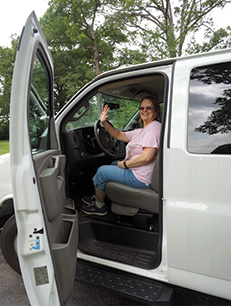 PLACES received a $10,000 grant from Fifth Third Bank’s George B. Quatman Foundation this winter, which was used to buy a used van for Marty’s House. Staff at this adult care facility will use the van to transport residents to appointments with doctors, social workers and other care providers. Fifth Third has been generous to PLACES in the past, donating money for two vans in the previous decade.
PLACES received a $10,000 grant from Fifth Third Bank’s George B. Quatman Foundation this winter, which was used to buy a used van for Marty’s House. Staff at this adult care facility will use the van to transport residents to appointments with doctors, social workers and other care providers. Fifth Third has been generous to PLACES in the past, donating money for two vans in the previous decade.
Research Courtesy of Local Expert
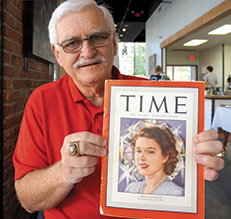 The retrospective in this issue is possible due to research conducted by Joe Szoke (pictured above) during his long career in the mental health field. Joe worked at the state hospital in Dayton from 1969-71 while earning his graduate degree in clinical psychology from the University of Dayton.
The retrospective in this issue is possible due to research conducted by Joe Szoke (pictured above) during his long career in the mental health field. Joe worked at the state hospital in Dayton from 1969-71 while earning his graduate degree in clinical psychology from the University of Dayton.
On graduation he went to work for the Ohio Bureau of Drug Abuse, then the Montgomery County Mental Health Board, before becoming executive director of the Tri County Board of Mental Health from 1974 to 1990. He retired from the Montgomery County ADAMHS Board in 2011.
Joe poses here with a March 1947 issue of TIME magazine, featuring an OSU study about mental health in Miami County. Researchers in this “typical Ohio rural county found that country people, in spite of their slower-paced living, are just as frustrated, neurotic and generally queer as anybody else – perhaps more so.”
Celebrating 30 Years Serving Dayton: A Message from Executive Director Roy Craig
Thirty years of operation brings significant change in technology, societal trends and government funding. From cell phones and web apps to greater acceptance of diversity and mental illness, PLACES has been serving those whom society tends to forget or ignore. This special 30th anniversary issue looks at the history of behavioral health in our community and at PLACES.
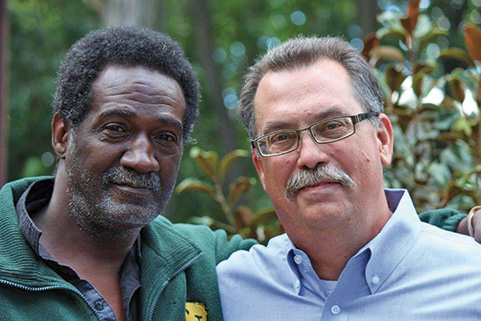
For 30 years PLACES has been providing quality housing and supportive services for single adults diagnosed with mental illness in a home-like atmosphere of dignity and respect. For 20 years of that time, I have been proud to serve as executive director.
I’ve had the honor and pleasure of leading a dedicated team of caring individuals, including a few administrative and direct care staff who have been here more than 25 years. I can assure you it’s not an opulent compensation package that attracts and keeps these people here; it’s a passion for our mission.
It’s what they believe in and are willing to work for. They have choices where they can work, but many have chosen to remain with us a long time. We could not have stayed true to our values without them.
In our world, attitude is as critical as aptitude. It takes special people to care for individuals who have severe and persistent mental illness. By doing a good job of providing residential services, we were given a grant in 2002 to expand to serve the homeless with our Housing First program. The following decade saw us adding three more programs.
None of this would be possible without the collaboration of mental health agencies, homeless shelters, and other behavioral health organizations in our community. We truly value their partnership.
Other big changes happened over three decades – changes in government funding, new care protocols and drugs, disruptive technology – and PLACES has faced them all. Our volunteer board of trustees has provided invaluable guidance and oversight as we face these challenges.
When we realized four years ago that behavioral healthcare redesign was coming, the board and I wrestled with the decision whether to set Medicaid certification as a goal. We knew it would require adoption of electronic health records and substantial training for our staff. It was a lot to ask of our employees, since the way we needed to operate in the new world was completely different, with an increased level of rigor and discipline…and paperwork!
I am happy to say they rose to the challenge. We didn’t lose the soul of our company, but were able to retain and retrain people with a passion for our mission.
As for the future, I am as excited about the next 10 years as I am proud of our past. We plan to open another adult care facility in the next couple of years, which will be the first new ACF since the 1990s. We’re looking to provide other types of behavioral health care services, like community psychiatric supportive treatment, to help people with disabilities positively contribute at school, work and home. We’re even looking to expand regionally or statewide to serve our target population.
To my colleagues here at PLACES…the residents, clients and tenants we serve, and their families…and to our partners in the behavioral health community, I offer my appreciation for your contributions to our calling. With your help, let us continue providing homes and services for the most vulnerable among us.
– Roy Craig, Executive Director
Down the Decades: A History of Mental Health Treatment
As PLACES celebrates 30 years of service to the citizens of Montgomery County, we thought it was a good time to look back at the history of mental health services in our nation and community.
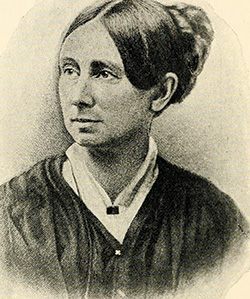
Dorothea Dix was among the first to identify the need for better treatment of the indigent mentally ill when she conducted a statewide investigation into their care in Massachusetts in 1840-41. Having found widespread abuses, her fierce lobbying resulted in a bill to expand the state hospital at Worcester. Her later travels from New Hampshire to Louisiana documented the need for sweeping reforms, which eventually led to the building of mental hospitals, or “asylums” as they were called, throughout the country, including St. Elizabeth’s Hospital in Washington, D.C.
“The poor under the pressure of this calamity [insanity], have the same just claim upon the public treasury, as the rich have upon the private purse of their family as they have the need, so have they the right to share the benefits of Hospital treatment,” she wrote. – Dorothea Dix (1802-1887), nurse, teacher, author, activist and reformer who created the first generation of mental asylums
1838
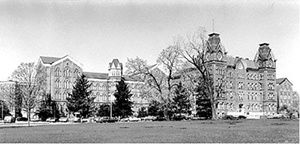
The Ohio Lunatic Asylum, built in Columbus, was the first state-supported hospital in Ohio and the first designed solely to treat the mentally ill.
1852
Ohio recognized “lunacy” and established two additional asylums.
1855
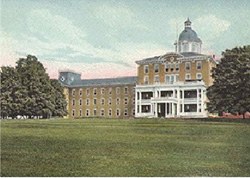
1856
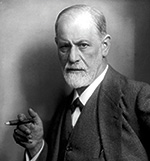
1861-65
During the American Civil War, there were not a lot of painkillers to choose from, so doctors dispensed morphine, causing so many men to become dependent that they called it the “soldier’s disease.”
Around that time, German manufacturer Bayer introduced heroin as a cure for morphine addiction. Opiates were also frequently dispensed for so-called “female weakness,” too.

According to local behavioral health expert Joe Szoke, the large numbers of men rejected for the draft and discharged from service due to mental health issues raised concern. Mental illness was recognized as a social problem and citizens saw the opportunity for a solution.
1946

Up until the war, patients were generally seen in state hospitals and for a long period of time. But war couldn’t afford the luxury of that protocol. Instead, group treatment emerged as a way of helping multiple soldiers at once, in a field hospital near where they fought and suffered.
Physicians began to view mental illness as an acute problem and became eager to try new methods of treatment. This led to the first federal legislation, which resulted in more funding for St. Elizabeth’s in D.C. After that, state hospitals grew to become big institutions.
1947
The first mental health clinic in Ohio was opened in Piqua.
The Ohio Department of Mental Health wanted to pick a “typical” area, so they looked at court and draft board statistics and general health in Miami County. They were surprised to find that mental health issues were not only the result of big city pressures, but occurred in rural communities. These findings, published in Time magazine [see sidebar at right] led to the opening of the Upper Miami Valley Guidance Clinic, followed by the Adult Psychiatric Clinic, later called Eastway.
By 1955, NIMH had 550,000 people in hospitals. NIMH administrators called for community action for mental health starting in 1960. Local communities began to receive funding for mental health along with big state hospitals.
1960s

Szoke suggests that this could be considered the start of managed care, in that a group was made responsible for a defined area or a so-called defined population. The mental health “center” was considered to be a concept, not a building, he explained. For the first time, behavioral health services could be delivered in schools, churches and elsewhere in the community.
It was also the first time that anyone talked about the continuity of care. When people transferred from in-patient hospital stays to community care, someone followed their care.
At that point, mental health services had to be available, accessible and accountable. For example, that meant they had to be open before 8 am, after 5 pm and on weekends, and they had to be accountable to local boards.
Along with this movement to treat people in the community, psychotropic drugs were introduced that helped people stay out of hospitals.Society also got better at case management and support.
It was felt that releasing people from hospitals into the community was more humane, but by 1969 they were being released without the funding needed to support them. Many people were not getting the care they needed. So-called “deinstitutionalization” failed.
The first center established was at Good Samaritan, then came South Community, Eastway and Daymont West. The community developed four catchment areas, which were federally designated boundaries to deliver these five basic services to the population: outpatient care, counseling/education, partial hospitalization, emergency care, and inpatient care.
1990s
Two decades later another approach to deinstitutionalization was tried, but this time with the resources needed. Funding followed the residents, funneling to local boards with local leaders, whom it was felt knew better how to care for their fellow citizens. The ADAMHS board was created at that time to contract with and fund services locally.
In this new system, dollars followed the clients, which caused a big drop in hospital stays. The system worked much better overall, but the demand was higher than had been realized.
Today, Montgomery County’s population is about 600,000. It is typical for about 20% of a local community’s citizens to need mental health services, which would be 120,000 for the Dayton area. However, current funding is not sufficient to serve that population.
PLACES – 30 Years of Serving the Community
“In the summer of 1988 a small group of concerned Dayton area residents set up a non-profit organization – called PLACES Incorporated – to provide housing and support services for people trying to recover from mental illness.” Thus begins the organization’s history on a now-faded piece of Thermo Fax paper.
The history of PLACES can be found in files of old news clippings and newsletters, in boxes of snapshots showing residents, clients and tenants enjoying them-selves at summer picnics, holiday parties, recognition receptions, bowling leagues, and in daily life.
Thousands of people have been impacted by this organization over the last three decades, from the homeless who now have a roof over their head to staff and volunteers whose eyes have been opened to the challenges their fellow citizens face and the recovery that can be possible.
Thanks to everyone who has made a home here at PLACES. We honor you and congratulate you on your contributions, big and small, to the life of our county.
